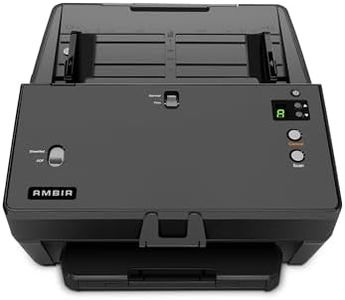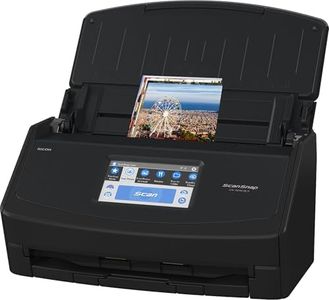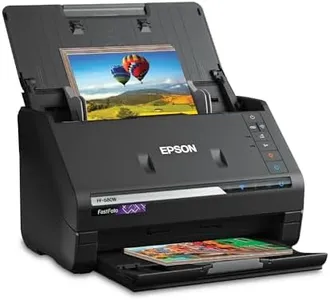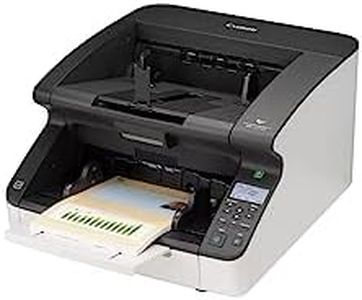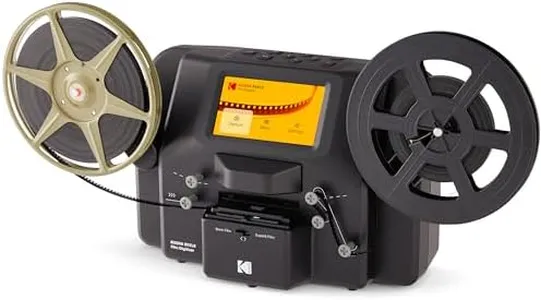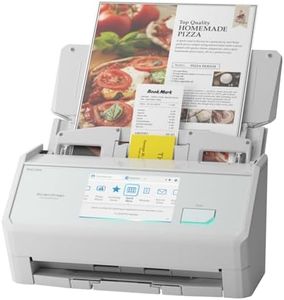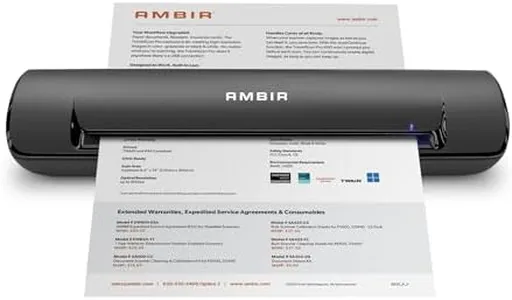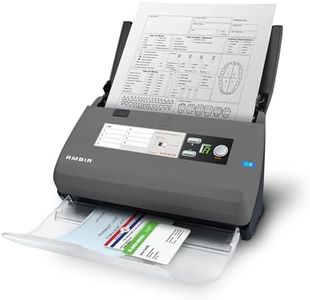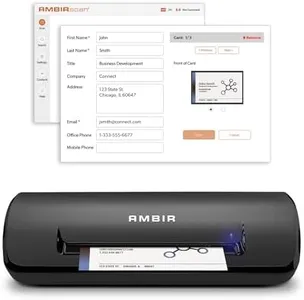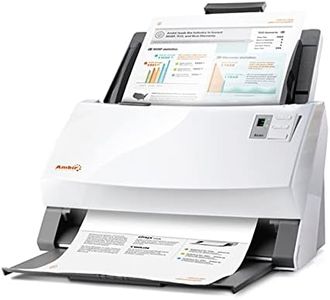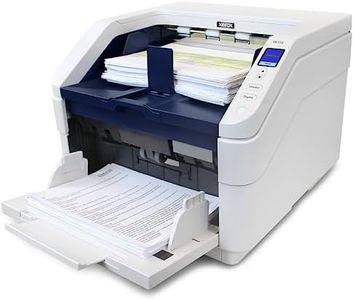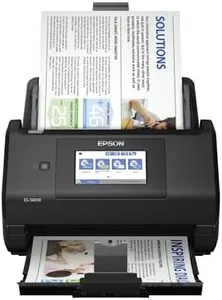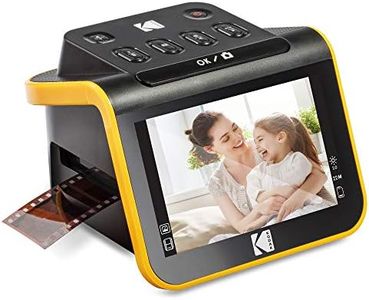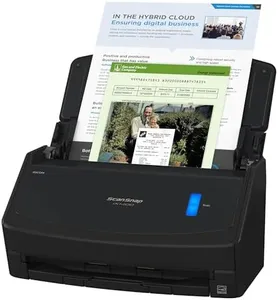10 Best Scanners 2025 in the United States
Our technology thoroughly searches through the online shopping world, reviewing hundreds of sites. We then process and analyze this information, updating in real-time to bring you the latest top-rated products. This way, you always get the best and most current options available.

Our Top Picks
Winner
ScanSnap iX1600 Wireless or USB High-Speed Cloud Enabled Document, Photo & Receipt Scanner with Large Touchscreen and Auto Document Feeder for Mac or PC, 17 watts, Black
Most important from
4852 reviews
The ScanSnap iX1600 is an excellent choice for individuals and small businesses looking for a reliable document scanner. One of its standout features is the fast scan speed of 40 pages per minute in duplex mode, making it efficient for handling large volumes of documents quickly. The large color touchscreen simplifies navigation and allows users to set up to 30 scanning profiles, which is great for tailored document management, whether for personal or team use.
When it comes to connectivity, the iX1600 offers both Wi-Fi and USB options, allowing for flexible placement and direct connection to smart devices and cloud services without needing a computer. This wireless capability adds convenience, especially for those who prefer decluttering their workspace.
Another strength is the software that comes with the scanner, ScanSnap Home, which makes managing and organizing scanned documents, photos, and receipts straightforward. This can significantly enhance productivity and ensure that important documents are easily accessible. However, while the resolution of 600 dpi is suitable for most everyday scanning tasks, it may not meet the needs of professionals who require extremely high-quality images, such as photographers or graphic designers. Additionally, the scanner is relatively bulky at 7.5 pounds and its dimensions might not be ideal for users looking for ultra-portability. Although it is compact for a desktop scanner, those needing an ultra-light, travel-friendly option might want to consider alternatives.
Most important from
4852 reviews
Epson FastFoto FF-680W Wireless High-Speed Photo and Document Scanning System, Black
Most important from
3181 reviews
The Epson FastFoto FF-680W is an impressive option in the scanner category, particularly for those looking to digitize photos quickly and efficiently. One of its standout features is its ability to scan at an incredible speed, reaching up to one photo per second at a resolution of 300 dpi, which makes it ideal for users with large photo collections. The capability to batch-scan up to 36 photos at once is a significant time-saver. Additionally, it supports various formats, allowing for high-quality archiving at 600 dpi and even enlargements up to 1200 dpi.
For those wanting to preserve and enhance their photos, the built-in Perfect Picture Imaging System offers features like color restoration and red-eye reduction, which can breathe new life into older images. There's also a unique single-step technology that captures both the front and handwritten notes from the back of photos, an excellent feature for those who cherish the stories behind their images.
Connectivity is straightforward with options for both USB and wireless setups, plus the ability to easily upload scanned images directly to services like Dropbox and Google Drive. The inclusion of Epson ScanSmart software with OCR for document scanning further enhances its functionality, making it suitable for both photo and document scanning tasks.
Most important from
3181 reviews
Canon imageFORMULA DR-G2110 Sheetfed Scanner - 600 dpi Optical
The Canon imageFORMULA DR-G2110 Sheetfed Scanner is a robust scanner designed to handle high-volume document processing. One of its standout features is its high resolution of 600 dpi, which ensures excellent scan quality for both text and images. This makes it suitable for businesses or individuals who need precise and detailed scans. Additionally, the 24-bit color depth helps in maintaining good color accuracy, which is beneficial for scanning color documents and images.
The scanner has a substantial sheet capacity of 500, allowing it to manage large batches without frequent reloading, thus improving efficiency in busy office environments. In terms of connectivity, it uses USB, which is reliable but lacks wireless options that many modern scanners offer, potentially limiting flexibility in some setups. The scanner is quite heavy at 56.5 pounds and large in size, making it less portable and requiring a dedicated space. This might be a drawback for small offices or home users with limited space.
The device was first available in 2018 and is compatible with various document types, including thick paper and business cards, which adds to its versatility. The Canon imageFORMULA DR-G2110 is best suited for large businesses needing a reliable, high-capacity scanner with excellent resolution and color depth, but it may not be ideal for users needing portability or the latest connectivity options.
Buying Guide for the Best Scanners
Choosing the right scanner can significantly impact your productivity and the quality of your scanned documents. Whether you need a scanner for personal use, a small business, or a large office, understanding the key specifications will help you make an informed decision. Here are the main factors to consider when selecting a scanner that best fits your needs.FAQ
Most Popular Categories Right Now
